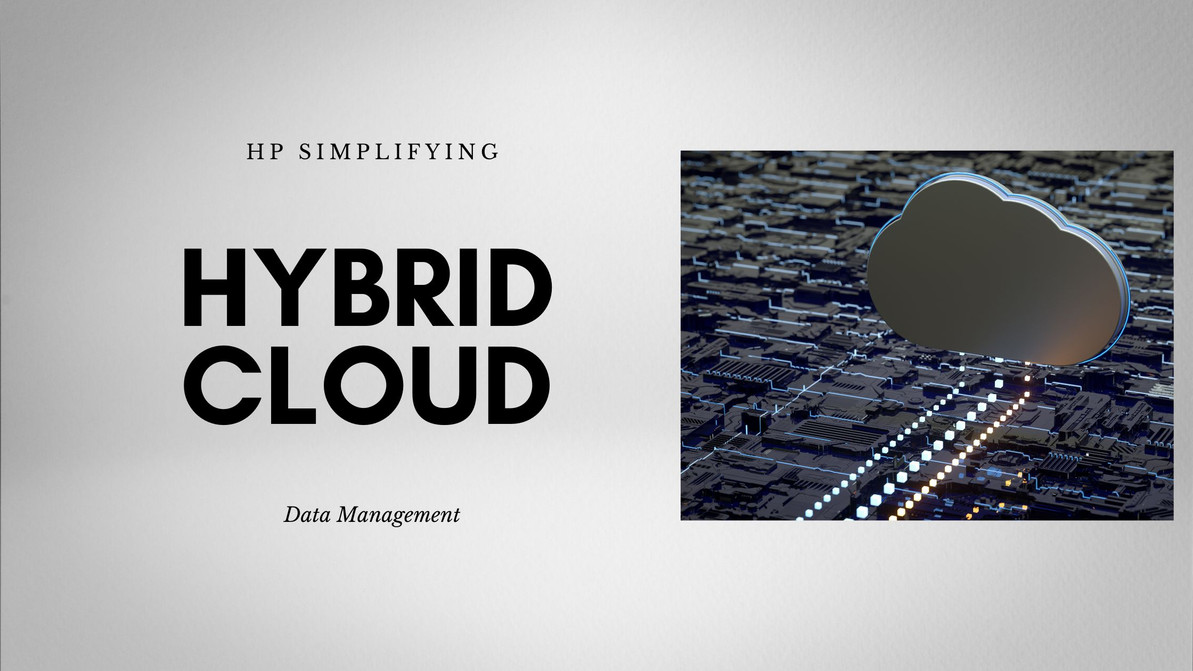How is hpe simplifying data management across hybrid cloud?
In today's fast-evolving digital landscape, managing data across hybrid cloud environments presents significant challenges for organizations. Hewlett Packard Enterprise (HPE) is at the forefront of simplifying this intricate process through innovative strategies and solutions. Here's a deep dive into how HPE is transforming data management, ensuring businesses can thrive in a hybrid cloud ecosystem.
1. AI-Driven Cloud Operational Experience
Potential Benefits: Enhancing Efficiency and Performance
HPE leverages artificial intelligence to redefine the operational experience in cloud environments. This AI-driven methodology not only optimizes efficiency at scale but also guarantees that applications remain operational and perform at their peak. For businesses, this translates into reduced downtime and enhanced customer satisfaction.
Drawbacks: The Complexity of Integration
Integrating AI into existing systems can pose initial challenges, especially for organizations with legacy infrastructures. The transition requires skilled professionals and could lead to temporary disruptions in service.
2. Unified Hybrid Cloud Platform
Potential Benefits: Seamless Data Management
By offering a unified platform, HPE enables a consistent cloud experience for applications and data, irrespective of their location. This seamless integration facilitates easier management and greater control over data assets, providing a strategic advantage in data governance.
Drawbacks: Dependency on a Single Vendor
Relying on a single platform for hybrid cloud management might lead to vendor lock-in, potentially limiting flexibility and negotiation leverage on pricing and terms of service.
3. Self-Service Cloud on Demand
Potential Benefits: Empowering Users
HPE's self-service, on-demand cloud solutions empower users with the ability to manage virtual machines and infrastructure efficiently. This approach accelerates deployment and fosters innovation by allowing IT teams to focus on strategic initiatives rather than mundane tasks.
Drawbacks: Resource Management Challenges
While self-service capabilities offer flexibility, they also require users to possess a certain level of technical expertise. Mismanagement of resources could lead to increased costs and underutilization of infrastructure.
4. Modernization Across Multi-Gen IT
Potential Benefits: Bridging the Old and the New
HPE's focus on modernizing legacy IT systems offers a pathway to transform and adapt to a cloud-native environment without abandoning existing investments. This strategic balance between old and new technologies ensures a smooth transition and maximizes ROI.
Drawbacks: Initial Costs
The process of modernizing multi-generational IT infrastructures can entail significant upfront costs and complexity, making it a daunting task for some organizations to justify the initial investment.
5. HPE GreenLake
Potential Benefits: Flexibility and Scalability
The HPE GreenLake platform revolutionizes the hybrid cloud operating model by offering a pay-per-use structure that's both flexible and scalable. This model allows businesses to align their expenses with actual usage, optimizing cost-efficiency and scalability.
Drawbacks: Predicting Costs
While the pay-per-use model provides flexibility, it can make budgeting challenging as costs can fluctuate based on consumption, requiring companies to closely monitor their usage to avoid unexpected expenses.
6. Data Storage Products
Potential Benefits: Eliminating Data Silos
HPE's data storage solutions are designed to break down data silos and scale limitations by offering a single architecture for both block and file workloads. This unified approach enhances performance for data-intensive applications and streamlines data management processes.
Drawbacks: Migration Efforts
Consolidating data storage across different protocols into a single architecture might require substantial migration efforts, posing temporary operational disruptions and requiring meticulous planning.
7. Partnership with BigID
Potential Benefits: Strengthening Data Security
Through its collaboration with BigID, HPE enhances its hybrid cloud offerings with advanced data discovery and control solutions. This partnership empowers businesses with greater insights into data security, compliance, privacy, and governance, reinforcing their data management strategy.
Drawbacks: Integration Complexity
Integrating third-party solutions such as BigID into existing data management frameworks can introduce complexity, requiring additional resources for seamless operation.
8. Streamlined Data Management
Potential Benefits: Simplifying Operations
The synergy between HPE and BigID simplifies data management by providing easy access to container services via the HPE GreenLake Marketplace. This eliminates the complexities of managing underlying technology stacks, allowing businesses to focus on core operations.
Drawbacks: Learning Curve
Adopting new management tools and services comes with a learning curve. Organizations must invest in training to fully leverage the benefits of streamlined data management solutions.
HPE's approach to simplifying data management across hybrid cloud environments is multifaceted, addressing the core challenges faced by businesses today. While the benefits of these strategies are compelling, it's important for organizations to carefully navigate the associated drawbacks to fully capitalize on the potential of hybrid cloud computing.
Recent Posts
-
Why It's Important to Purchase Genuine HPE Replacement Parts
When maintaining the integrity and performance of your Hewlett Packard Enterprise (HPE) systems, the …Jun 28th 2024 -
Mastering Modern Data: Cutting-Edge Storage Solutions in the AI Era
In the rapidly evolving digital era, Artificial Intelligence (AI) has become a cornerstone of innov …Jun 20th 2024 -
Product Comparison: HPE Q1J00A MSA 2050 vs. HPE Q1J10A D3710 vs. HPE 717870-001 MSA 2040
IntroductionIn today’s data-driven world, the demand for efficient, reliable, and scalable data stor …May 23rd 2024




